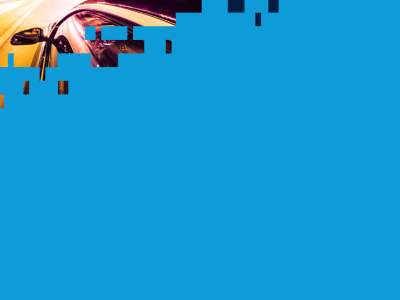In March 2022, the authorities from Belgium, the Netherlands and Luxembourg, which are collectively known as the “Benelux countries”, met and agreed to collaborate more closely on closing their respective VAT gaps. In this article, our global tax experts - Kaatje Bondewel, RSM Belgium, Jaouad Bantal, RSM Netherlands and Manuel Hack, RSM Luxemburg - explore what this really means for companies operating in these three countries.
What is the VAT Gap and how significant is it?
The VAT gap is the difference between the VAT revenue that is projected by a Member State and what is collected by its Tax Authorities. It can be further described as the sum of revenues lost to VAT fraud and evasion, VAT avoidance and optimisation practices, bankruptcies, and financial insolvencies, as well as miscalculations and administrative errors.
In 2019 the total sum of revenue lost by the Benelux countries amounted to EUR 7.4 billion. The collective EU countries lost revenue of EUR 134 billion in 2019. Implications of the VAT gap are lower tax revenues for Member States which then result in less public funds to spend on services, such as healthcare and education.
There are ways in which the VAT gap can be, and already is being, closed. In this article we will highlight some of the measures that are being taken to reduce the VAT gap.
What are the Benelux countries planning?
A meeting was held in March 2022 between representatives of Belgium, The Netherlands and Luxembourg with an agenda of “Bridging the VAT compliance gap: raising the efforts on reducing VAT Losses.” The group’s objective is to tackle fraud, under payments and inefficiencies and ensure that, as far as possible, all VAT is properly paid to the correct authorities.
Sharing knowledge is important in a region that is as economically intertwined as the Benelux countries given the very high volume of cross-border trade that takes place. Benelux has a good track record of combining forces to tackle tax fraud and focusing on digital technologies, starting in 2001, with the Transaction Network Analysis (“TNA”), introduced by the Benelux countries and later adopted by 27 Member States.
Why is the VAT Gap important?
The VAT gap results in a lower tax revenue for all EU Member States, and now is considered more important than ever to ensure all projected VAT is collected. As the EU emerges from the COVID-19 pandemic and the likelihood of increased bankruptcies because of economic uncertainties, revenues from VAT will be critical for Member States to fund increased costs of public healthcare and other social spending.
This was well summarised by the Secretary-General of the Benelux Union, Alain de Muyser, who remarked: “VAT fraud is obviously a form of unfair competition, which punishes the people that are honest. It also robs Member States of tax incomes which contribute to national health, social and humanitarian needs and to the recovery of our economies, after the COVID-crisis...Benelux cooperation has proven to be successful in the past, by innovating and setting up common mechanisms. With this new initiative the Benelux can once again be a pioneer.”
What is the reverse charge mechanism?
The reverse charge mechanism operates so that the VAT collection is shifted to the business customer, who pays the supplier without VAT, and then pays and reports the VAT in their own tax return. This is already used by several Member States to close the VAT gap. This means the supplier is no longer liable to report the payable VAT which reduces the possibility of fraud.
The reverse charge Articles of the VAT directive are not mandatory for Member States. As a result, there are differences between Member States on whether these articles are implemented and if so, in what way. Even within the Benelux there is a discrepancy on the implementation between the three countries.
Does the reverse charge mechanism apply in the Benelux countries?
In Belgium, in The Netherlands and in Luxembourg (but not for all services) the reverse charge will apply in cross border transactions where the taxable goods or services are supplied by an entity that is not established in the Member State in which the VAT is due.
In Belgium and The Netherlands, the reverse charge mechanism also applies to supplies of the following services:
- Construction
- Labour supply in the construction industry
- Immovable property
- Goods provided as security
- Immovable property in a compulsory sale
- Gas and electricity
- CO2 emission allowances
In the Netherlands, the reverse charge is further extended to supplies of:
- Used materials, scrap and waste, and
- Mobile phones, chips, games consoles, tablet computers and laptops.
In Luxembourg, the reverse charge does not as a general rule apply to cross-border transactions related to Luxembourg situated immovable assets and construction, though the secondment of employees would also benefit from the reverse charge if the contract does not qualify as a construction agreement. Foreign real estate agents invoicing a transaction fee for a Luxembourg real estate asset are for example required to VAT register in Luxembourg.
What is real time reporting?
Real time reporting means that businesses send their invoice information real-time to their respective tax authorities and/or the tax authorities collect information directly via Enterprise Resource Planning (ERP) solutions or other internal core systems. What are split payments? Split payment is a mechanism under which payment for goods or services is made by the purchaser to the supplier’s bank account and (1) the net amount is credited to the supplier’s basic settlement account and (2) the VAT amount is paid to a dedicated VAT account.
Both measurements can be used to close the VAT gap. However, within the EU these measures have not yet been implemented broadly, compared to Central and South America. For example;
- Chile has rolled out Electronic Tax Documents
- Mexico uses its e-invoice CFDI (Comprobantes fiscales digitales por internet)
- Brazil uses its e-invoice Nota Fiscal Eletrônica NF-e
These countries have real-time reporting and split payment systems in place.
When it comes to the EU, the first countries that have adopted similar measures includes;
- Hungary with its real-time reporting Real Time Invoice Reporting system (RTIR)
- Italy with its e-invoicing with Sistema di Interscambio system (SdI)
- Spain with its real-time reporting with Suministro Inmediato de Información system (SII)
- Greece with its e-invoicing with myData system
- Poland with its split payment mechanism for specific groups of goods and services
What is the current situation in the Benelux countries?
In Belgium, neither real-time reporting nor split payments have been implemented. This is expected to start at the end of 2022, with the implementation of e-invoicing for Business to Government (B2G) services (starting with a threshold of EUR 214,000, which will be progressively reduced to Nil by November 2023).
For B2B transactions, Belgium is expected to implement the e-invoicing requirement, most likely in a progressive way, starting in mid-2023.
In The Netherlands neither real-time reporting nor split payments have yet been implemented. At this stage the only applicable e-invoicing regulation in the Netherlands requires governmental bodies to be able to receive electronic invoices - centralized government (as of 2017) and decentralized government (as of 2019).
Luxembourg also has no implementation yet for real-time reporting or split payment, although it does have Standard Audit Files for Tax (SAF-T) implemented as of January 2011.
Luxembourg is also working on a gradual implementation of e-invoicing in the context of public procurement or concession contracts i.e. B2G transactions. The implementation began (December 2021) with periods dependent on the scale of companies, large ones first and small ones last.
First, large companies must e-invoice B2G transactions starting from 18 May 2022. Companies must fulfill two of three requirements to qualify as large, which includes recording total assets of € 20 million, net turnover of € 40 million or 250 average full-time employees during the financial year.
Medium-sized companies must e-invoice B2G transactions starting 18 October 2022. Companies must fulfill two of three requirements to qualify as medium-sized, which includes recording total assets of between Euro 4.4. million and € 20 million, net turnover of between Euro 8.8 million and € 40 million or between 50 and 250 average fulltime employees during the financial year.
Small companies must e-invoice B2G transactions starting from 18 March 2023. Companies must fulfill two of three requirements to qualify as small, which includes recording maximums for total assets of € 4,4 million, net turnover of € 8,8 million or 50 average full-time employees during the financial year.
The common delivery network in B2G transactions for all contracting parties for the automated receipt of e-invoices will be Pan European Public Procurement Online (PEPPOL).
What is the PEPPOL Network?
The PEPPOL Network allows organisations to exchange standards based electronic documents (including e-invoices) with other parties, including government agencies, that are also registered on the network. PEPPOL is owned and maintained by a non-profit international association established under Belgian law and consisting of public and private sector members. It is currently used in 40 countries in Europe, North America, and the Asia Pacific.
What are the next steps?
The EU is seeking to catch up on global progress when it comes to closing the VAT gap. The Benelux countries are behind compared to other Member States who have already taken steps in this direction and proved that implementation of real time reporting and e-invoicing is generating billions each year which would otherwise end up in the VAT gap.
Tax authorities in the Benelux countries will be investing more time and money into closing the VAT gap through digital innovation, so businesses should monitor progress and start reviewing their systems and supply chains to be ready for new reporting requirements. This development is expected to result in greater investment in digitalization by taxpayers to automate their VAT compliance process as much as possible. An automated and reliable system will be crucial to stay compliant.




